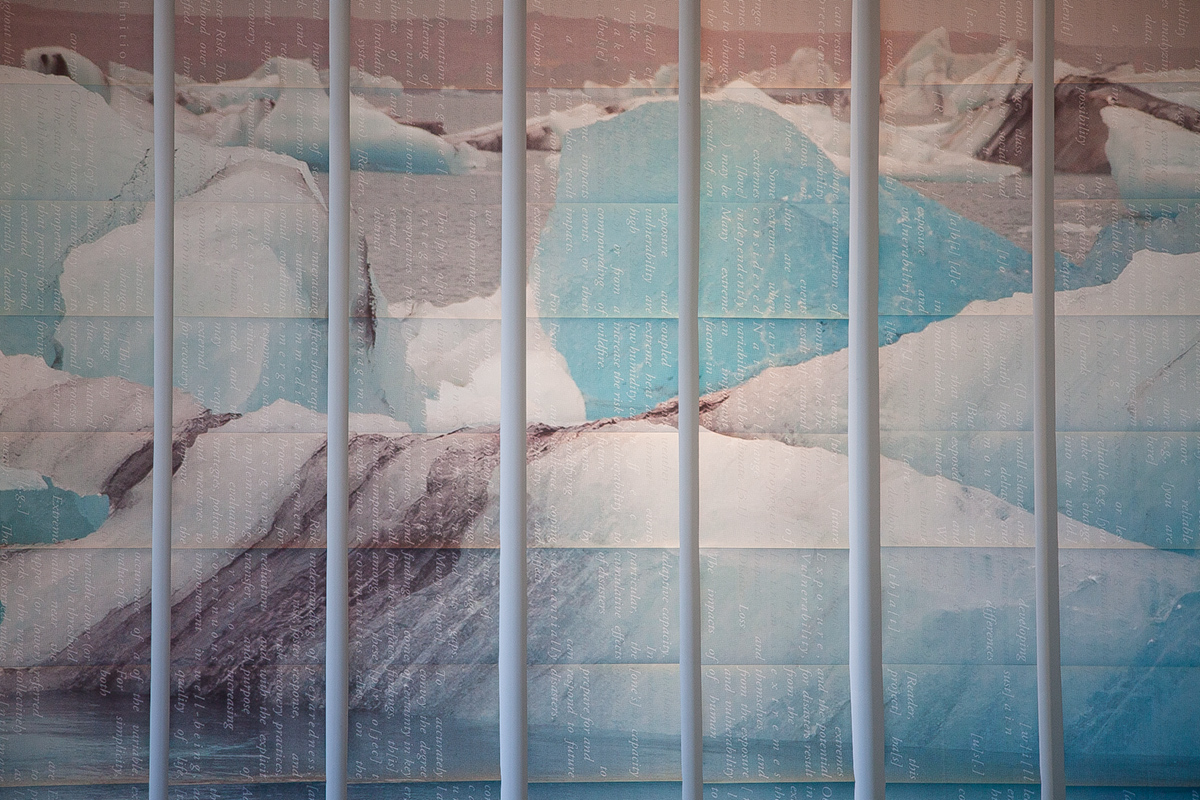I’m enjoying the Spring season with camera in hand. Hiking at the top of Avimor’s foothills—the view is amazing. Here is a shot of my house, can you see it? Which one! The one at the end of the street, on the left.
© 2016 Louise Levergneux
Spring is a time for new ideas and they are abound. These new ideas are a curse, sleeping is no longer a restful time to rejuvenate but a time to reflect—go wild, completely wild. Thoughts never stop and my mind jumps from one thought to another. I create whole artists’ books that keep me occupied throughout the night. These incessant thoughts that come and go, giving me no rest—ideas, ideas and more ideas! The more I write, the more I research, the more I get ideas!
With life and my activities, I’m getting behind in my blog posts. I finish a post and the next thing I know I need another for the week ahead. The great news is in my search I may have found the biggest artists’ book installations which I’m sure you will love.
Artist Nicole Pietrantoni who works and lives in Walla Walla, Washington, explores the complex relationship between human beings and nature via installations, artists’ books, and works on paper.
I’m glad to see that Nicole uses different methods for her finished product that lead to an exciting visual feast. Her works combine digital and traditional printmaking techniques. Nicole says this of her work.
Rather than a fixed site or a single image, I seek to engage nature as an accumulation of processes, perceptions, and narratives—a dynamic and shifting site open for interpretation
Nicole is guided in her research by the following questions:
What stories shape my interaction with and understanding of landscape and nature?
How have cultural and historical scripts, media, and technology disciplined me?
How does a lineage of art history influence a particular way of picturing and making images?
And finally, what stories do I contribute in my work as an artist to this discourse?
I enjoy her thoughts on the printing process of this period of time:
To be an artist working with printmedia today is to have a particular orientation towards replication, distribution, and representation. As printed matter is an increasingly ubiquitous part of our visual culture, printmaking as a fine art continues to expand and encompass a broadening definition. These complexities demand I question how I see, picture, and frame the world around me.
Working out of a long lineage of artists interested in the landscape, in this body of work, Nicole presents to us Implications. This installation is 9 feet x 33 feet with 30 inkjet printed accordion books folded and bound that expand to create a panoramic image of icebergs in Iceland.
© 2013 Nicole Pietrantoni, Implications
The text in the books simultaneously reads as both a poem (Risk[,] Event[,] Disaster) written by Devon Wootten and an official report on climate change, Special Report on Managing the Risks of Extreme Events and Disasters to Advance Climate Change Adaptation. The installation aims to draw attention to the means of making such images by enlarging halftone dots and disrupting the image through folds, cuts, and ruptures. Referencing 19th-century panoramas and the Romantic painting tradition, this work nods to a period when the relationship of humans to the landscape was rapidly transformed.
Similarly, today’s changing landscape demands that I examine the tension between my enjoyment of beautiful, idealized landscapes and an awareness of their ecological complexity.
© 2013 Nicole Pietrantoni, Implications, printed on Awagami Inbe Thin
Precipitous is a series of five handbound accordion books that expand to create a life-sized panoramic image of a rising sea. Precipitous is 14 feet x 6 feet and each book has 22 pages.
© 2014 Nicole Pietrantoni, Precipitous, inkjet on Awagami Inbe Thick
With a specific interest in printmaking’s historic relationship to representation, in this work Nicole gives a sign that humans play an active role in constructing and idealizing landscape. Pushing against the notion that nature is/was pristine, wild, or untouched, Precipitous gestures to a “post-natural” relationship to landscape. Nature can no longer be seen as something set apart from humans, but is instead something we fundamentally alter and continue to shape.
As books, the works suggest the authority of the encyclopedic approach in the cataloguing of natural specimens. As an installation, they dismantle sublime images through cuts, folds, and halftone dots. The overlaid poems by Devon Wootten are appropriations from reports issued by the Intergovernmental Panel on Climate Change. The text draws on the language of the report, Climate Change and Water.
© 2014 Nicole Pietrantoni, Precipitous
Nicole's new work is entitled Havened, 84 inches x 84 inches x 5 inches with 9 accordion books.
© 2015 Nicole Pietrantoni, Havened
© 2015 Nicole Pietrantoni, Havened
© 2015 Nicole Pietrantoni, Havened
What an Aha! moment viewing Nicole’s installations?
How do you explore your relationship with nature?























